Travel guide to Valencia: Where to stay and what to do in Spain’s laid-back coastal city
Visitors to this city in eastern Spain will be charmed within minutes by an endearing blend of picture-perfect coastline, a juxtaposition of historic and futuristic architecture, and food that calls for feasting. Chris Wilson reveals how best to spend time in this understated hub of coastal cool

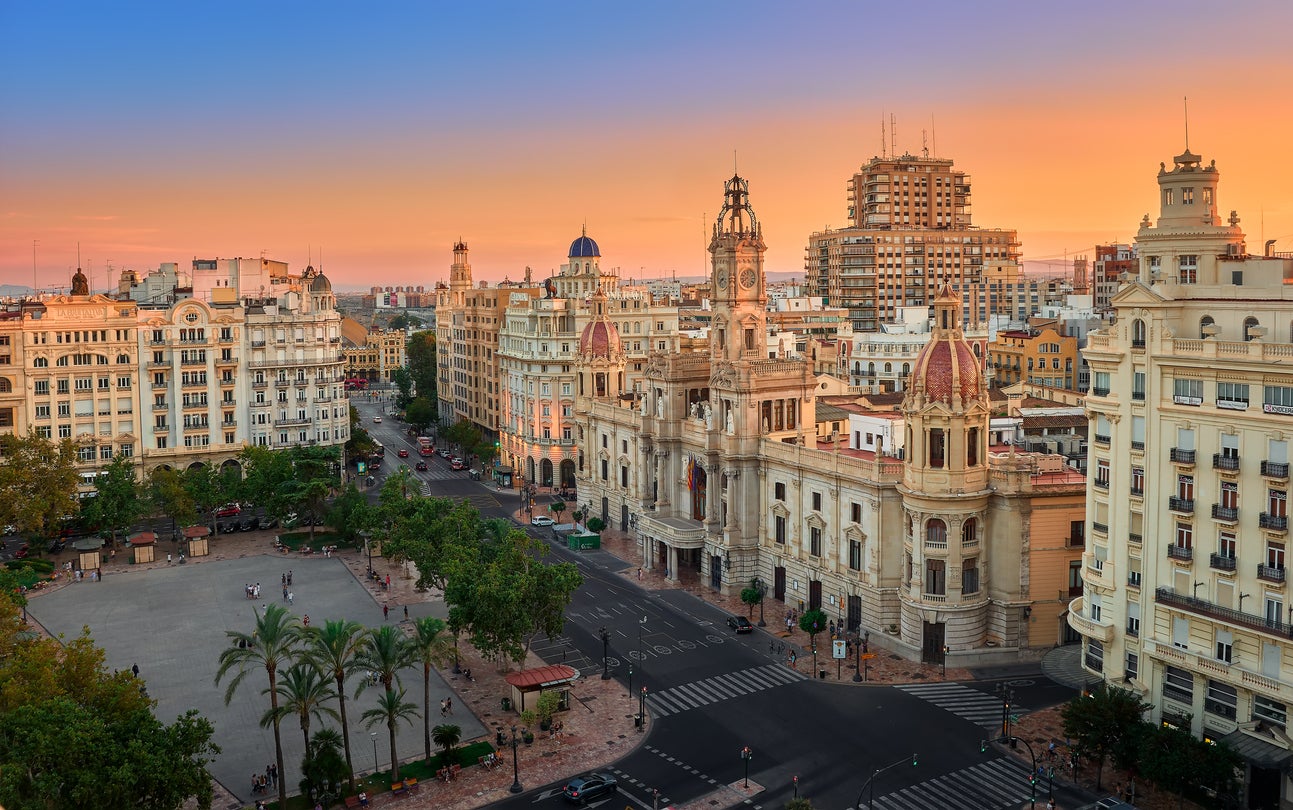
Your support helps us to tell the story
From reproductive rights to climate change to Big Tech, The Independent is on the ground when the story is developing. Whether it's investigating the financials of Elon Musk's pro-Trump PAC or producing our latest documentary, 'The A Word', which shines a light on the American women fighting for reproductive rights, we know how important it is to parse out the facts from the messaging.
At such a critical moment in US history, we need reporters on the ground. Your donation allows us to keep sending journalists to speak to both sides of the story.
The Independent is trusted by Americans across the entire political spectrum. And unlike many other quality news outlets, we choose not to lock Americans out of our reporting and analysis with paywalls. We believe quality journalism should be available to everyone, paid for by those who can afford it.
Your support makes all the difference.Sitting on a beautiful stretch of Mediterranean coast and bisected by a winding six-mile park that follows the old river, Valencia is a city that has seamlessly combined historic features and architectural elegance with the natural features it was blessed with.
Long overlooked in favour of the sprawling capital Madrid or perennially popular Barcelona, Valencia is beginning to show up more on the tourism radar. The city is happy for others to remain the dominant destinations, avoiding the overtourism that has plagued its Iberian neighbours and retaining its delightful balance of nature and city life.
A mix of palm-lined boulevards and tight-knit alleyways dominate its lively Old Town and the surrounding laid-back barrios. Gothic and modernist buildings add to an already abundant sense of Spanish charm, with the City of Arts and Sciences providing a dash of futuristic creativity.
Add in a refreshing lack of crowds, year-round sun and a gastronomic scene that belies its modest size, and Valencia has the ideal recipe for a weekend break (or longer). Discover the best of the city, but be sure to take some time exploring aimlessly, as you never know what you might find here.
What to do
Get to know the neighbourhoods
The Old Town, known as Ciutat Vella, is the heart of the city, linked by three squares. Start at Plaza del Ayuntamiento, the largest square in the city and home to the striking 18th-century City Hall, a vast post office featuring an intricate stained-glass ceiling and a daily flower market that has been operating from here since the 20th century.
From here, head north, firstly to Plaza de la Reina – the most scenic square in the city and a great place for a lunch, whether you fancy Italian, tapas or just sandwiches and crepes – and then to Plaza de la Virgen, which looks onto the cathedral and links the Old Town with the Carmen neighbourhood.
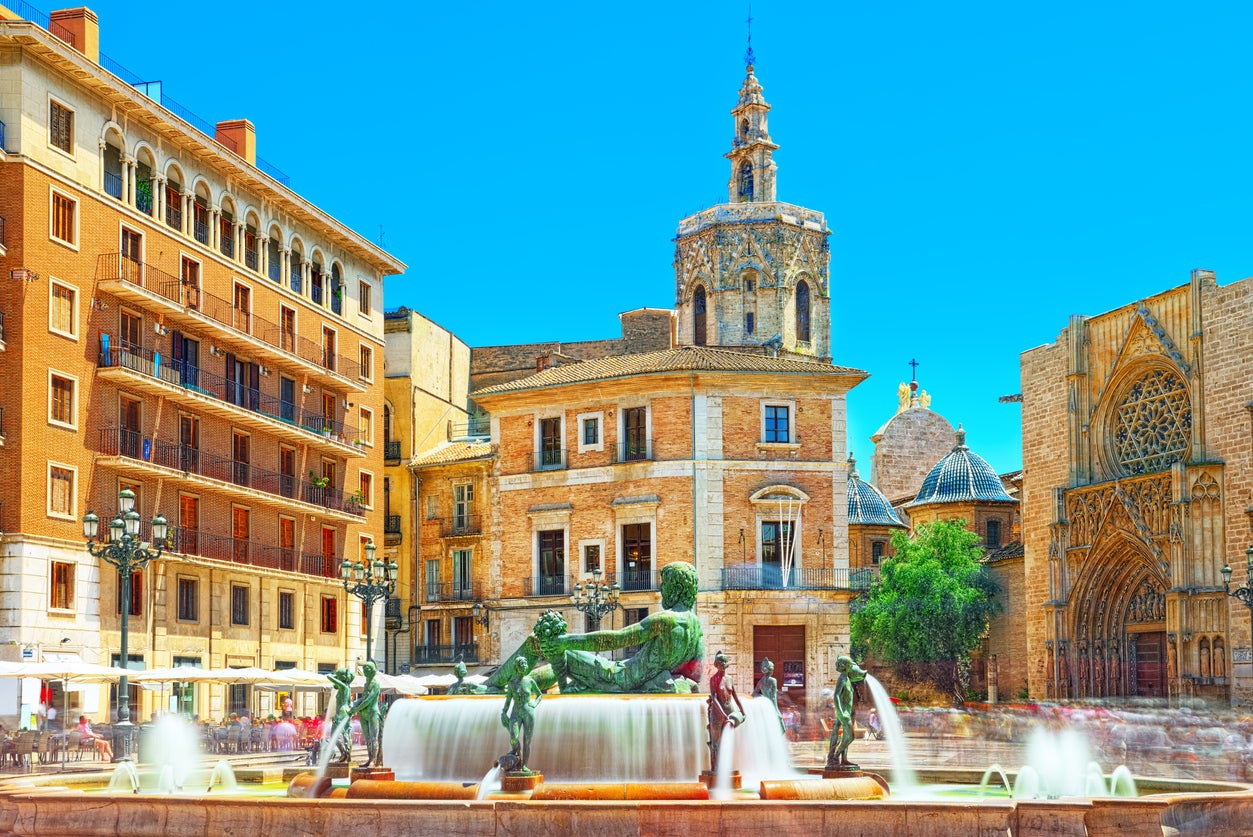
Carmen and hipster, international Ruzafa leave behind large plazas and well-known brands in favour of independent shops and hole-in-the-wall bars, hidden among a network of narrow alleys and cobbled streets. These are two of the main nightlife areas, though in the day they serve locals gathering for a quick coffee, a family lunch or a simple perusal of new stock.
Read more on Spain travel:
Explore by bike
Cycling is the most efficient way to see Valencia, helped by a proliferation of bike rental shops such as Hola! Rent a Bike and Ruzafa Bike Rent (prices from €7 (£6) per day).
Head to Turia Gardens, a park that runs along the bed of the old Turia River, which was diverted after a serious flood in the 1950s. It is now a winding route lined with palm trees, ponds and plant beds, with paths that lead down to the City of Arts and Sciences, the modern-day symbol of the city.
Head to the beach
Valencia’s golden sands and wide promenades are ideal for days spent by the sea, where visitors can rent seats and umbrellas for around €15 (£13) per day. Las Arenas and Malvarrosa are closest to the city centre and contain the majority of beach bars and restaurants, and the wide promenade directly links with Patacona, the quietest and least spoiled stretch, where locals enjoy colourful sunsets at a series of laid-back beach bars.
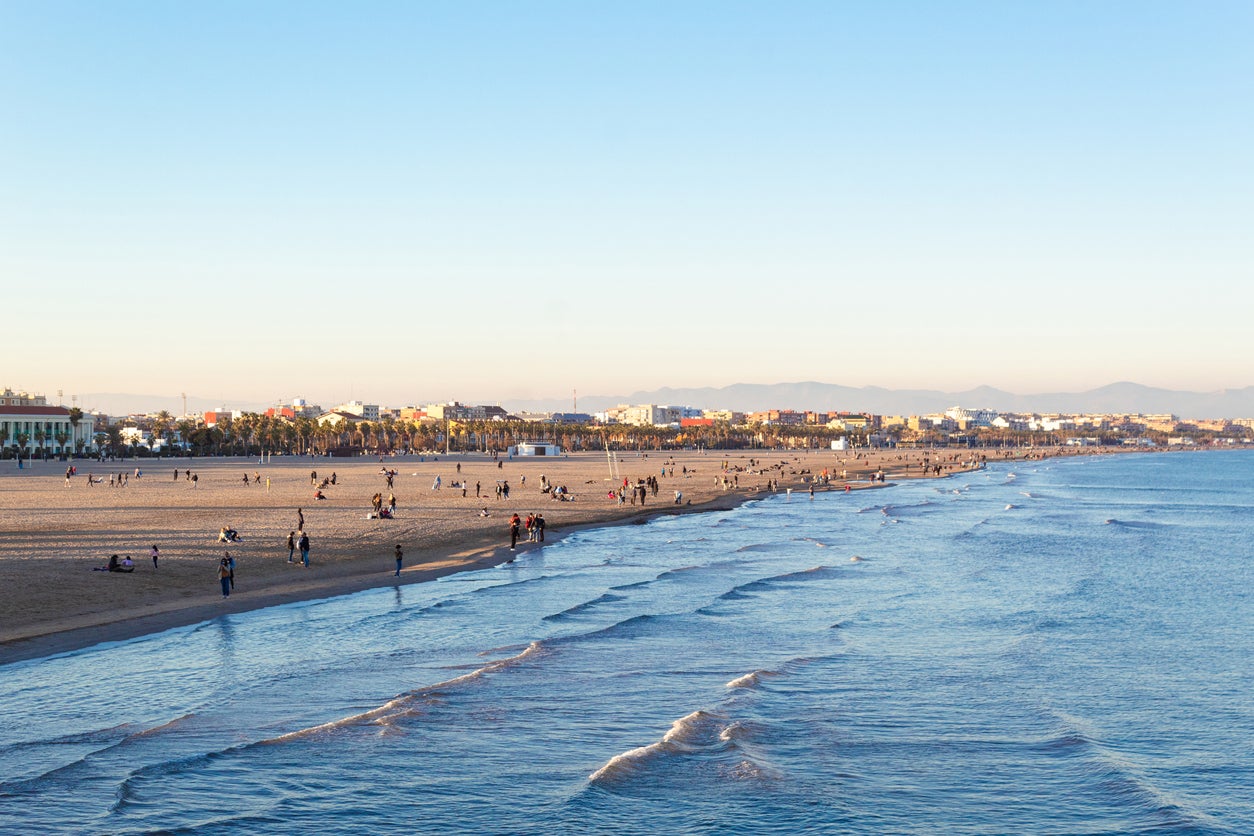
Wander galleries and landmarks
Valencia is home to an eclectic mix of landmarks. The Gothic cathedral guards the Holy Grail that purportedly Jesus sipped from during the Last Supper, while the Museum of Fine Arts, the second largest gallery in Spain, houses works from some of the country’s most famous artists, including Goya, Velasquez and Valencia’s own Joaquin Sorolla.
The 15th-century Silk Exchange, a large Gothic complex, is one of the most important historic monuments in the city. Made a Unesco World Heritage site in 1996, it is designated a “masterpiece of late Gothic architecture”, seen in its spiralling pillars, cross-vaulted ceilings and marble paving, and harks back to Valencia’s medieval importance as a major mercantile city on the Mediterranean.
Experience Las Fallas
The Fallas festival is the biggest event in the calendar, taking place annually in March. It celebrates Saint Joseph and old carpenters’ traditions between 1 and 19 March, where the daily mascleta show of gunpowder and fireworks takes place at 2pm. On 19 March, the Fallas figures – intricate, often satirical plaster monuments that can reach up to 80ft tall – are burned, having been on show across the city in the days leading up to the event. Visit during this time to see the city at its energetic best.
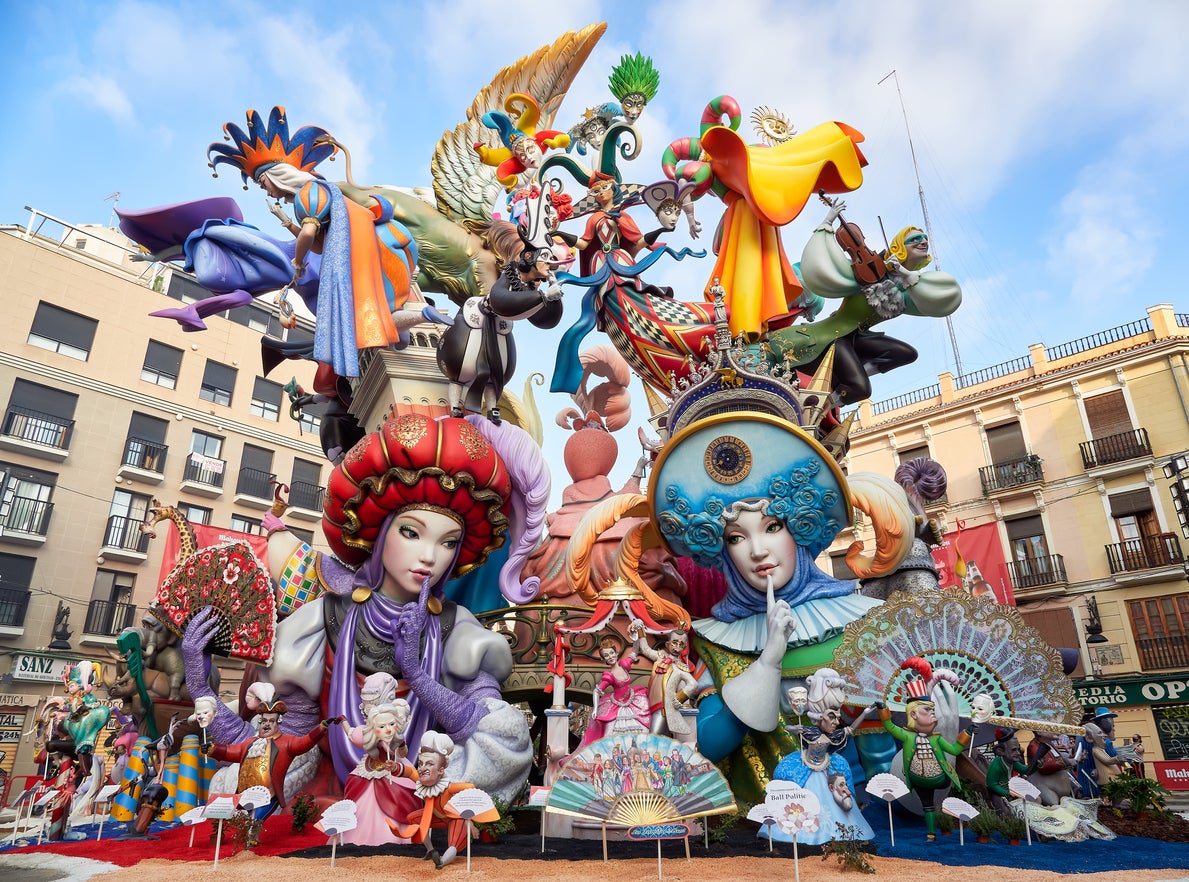
Where to stay
For easy access to the main station and a short walk to the city centre, Hotel Zenit is a good option, with comfortable, contemporary rooms and a great buffet breakfast.
The Melia Plaza is located close to most of Valencia’s main attractions, with a rooftop terrace that gives great views over the plaza. Rooms are stylish and modern, making for a pleasant stay.
The Vincci Palace hotel sits just off Plaza de la Reina. This Spanish chain specialises in elegant hotels and this outpost is no different, with opulent decor throughout and spacious, on-trend rooms. For price-quality ratio, this is one of the best places to stay in the city.
The Las Arenas Balneario is up there with Valencia’s most luxurious hotels. Sitting just a few metres from the beach, this glitzy hotel contains indoor and outdoor swimming pools, top-of-the-range spa facilities and large, elegant rooms with terraces.
Casual Vintage has rooms that are spacious considering the price, with decor inspired by pop culture of years gone by. Air-conditioning and a welcoming policy towards pets are a bonus, as is the superb Old Town location.
Where to eat
For breakfast and brunch, choose the delicious cakes and pastries of Dulce de Leche or a dish from Eggcellent, an independent cafe where the quality of the eggs benedict is second to none. Cafes such as Federal offer brunches featuring smashed avocado on toast.
For homemade tapas dishes and Spanish specialties, try Portolito, which serves exquisite tapas and more substantial dishes.
Central Bar is a local favourite, run by a Michelin-starred chef and shrewdly positioned in the middle of the Central Market, with a pared-back menu of around a dozen classic dishes, from blood sausage sandwiches to chicken croquettes.
Locals and tourists alike love the exceptional meats, mixed platters and homemade accompaniments at El Porteno. Alternatively, sample the deep flavours of the pinxtos at Sagardi, or the excellent mix of Spanish and international tapas dishes, from padron peppers to duck samosas, at the eccentric Cafe Infanta. If you’re looking for a wider selection, the stalls at Mercado de la Imprenta sell anything from bao buns to Lebanese cuisine.
Dozens of restaurants and cafes line the mile or so stretch of sand between Las Arenas and Patacona, including the famed La Pepica, where authentic paella – which contains chicken, rabbit and vegetables, not fish – is the highlight, and beach bars such as Destino 56, which offer a wider range of international dishes washed down with delicious cocktails.
Where to drink
The standard of coffee in Valencia is excellent, from the quick takeaways of Panaria to the various independent cafes. Horchata, a local tiger nut milk delicacy, can be sampled at the long-standing Horchateria de Santa Catalina, in the centre of the city, for an authentic Valencian experience.
Several of the city’s best watering holes are a fusion of morning cafe and late-night bar, best showcased in the quirky, old-fashioned Cafe de las Horas, where sangria is served until the early hours of the morning in a glamorous 19th-century setting.
Valencia has a slew of great rooftop bars too, from the panoramic vistas over the Turia Gardens at Blanq Carmen to the summer parties on the terrace at L’Umbracle, another part of the City of Arts.
The two tapas chains of Cien Montaditos and La Surena provide amazing drink and food deals, such as “everything on the menu for €1” on Wednesdays and Sundays.
Where to shop
The city’s main thoroughfare is the Calle Colon, which is home to international brands and Spanish favourite El Corte Ingles, a large department store. Nearby Calle del Poeta Carol is the place to find high-end brands.
The winding streets of Carmen and Ruzafa are the destination for vintage shops, small boutiques and Spanish favourites such as Natura, a chain that sells a range of clothing, home decor and everyday items. In Carmen, Calle Caballeros is home to clothing stores such as Solea and Luna Nera, while Ruzafa – where you’ll find a vast range of second-hand stores – is the place to go to find quirky souvenirs, whether it’s Sixties posters at Novedades Casino or handmade jewellery at Gnomo.
To live like a local, buy fresh produce at the Central Market. Billed as the largest fresh produce market in Europe, its modernist structure and patterned ceramic tiles have become a symbol of the city. A staple in the life of many valencianos, its stalls welcome hundreds every morning, hunting anything from the catch of the day to deli meats.
Architectural highlight
The avant-garde structure of the City of Arts and Sciences is the modern symbol of Valencia. A collection of buildings that houses Europe’s largest aquarium, the Palau de les Arts cultural centre and several other features, it was inaugurated in 1998, but its design and complexity remain years ahead of its time.
The local architect in charge of the project, Santiago Contralto, often creates works that resemble living organisms. The Hemispheric, which contains a cinema and planetarium, is designed to resemble a human eye, while the Science Museum resembles the skeleton of a whale. The complex is open daily from 10am until 9pm in high season.
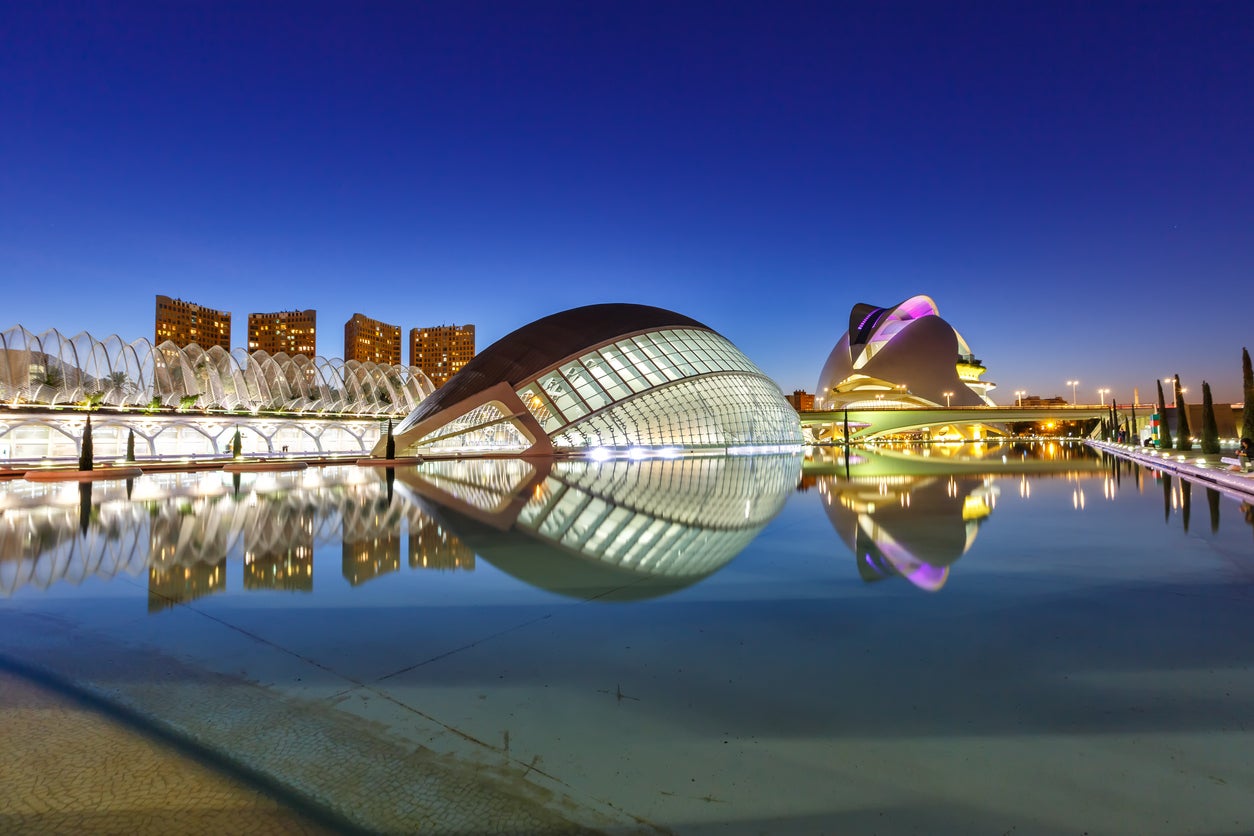
FAQs
What currency do I need?
Euros.
What language do they speak?
Spanish, but many people speak English.
Should I tip?
Service charges are rarely included, and a tip of 10 per cent is appreciated.
How should I get around?
Getting around the centre is best on foot, though the beaches are an hour away. Many people use bikes, while the metro is well-developed and efficient for longer journeys.
What’s the best view?
The Miguelete is the bell tower of the city’s cathedral, with a terrace around 50 metres up (it costs €2 to access). For a drink with a view, the Atenea Sky bar has sweeping views over Ayuntamiento.
Insider tip
While the siesta tradition has become less prevalent in Madrid and Barcelona, hundreds of businesses throughout Valencia will close for an hour or two in the early afternoon. Avoid doing the bulk of your shopping between 2pm and 4pm.
Read our reviews on the best Spain hotels
Join our commenting forum
Join thought-provoking conversations, follow other Independent readers and see their replies
Comments